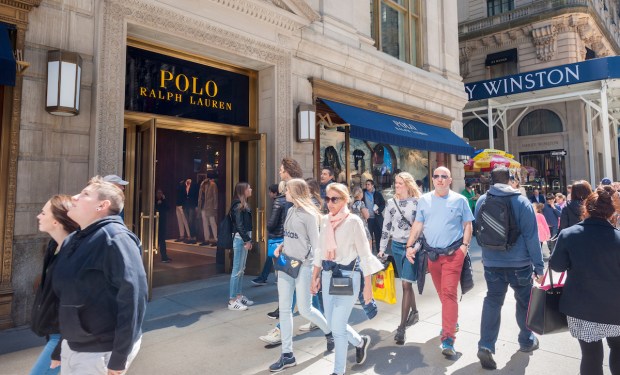
As luxury brands increasingly find ways to create direct relationships with their customers, high-end department store chains are facing new challenges.
Ralph Lauren, for its part, reported Thursday (Feb. 8) that it saw global direct-to-consumer (D2C) comparable store sales rise 9% in the third quarter of fiscal year 2024, gaining 1.7 million new D2C customers.
“[D2C] now represents about two-thirds of the company,” President and CEO Patrice Louvet told analysts on an earnings call. “So, a majority of the business is [D2C] for Ralph Lauren. And the [D2C] channels are really where the world of Ralph Lauren comes to life most powerfully, where we engage most directly with the consumer and have the most ability to impact the consumer experience.”
Also Thursday, Bloomberg reported that Chanel opened its first store in the United States selling jewelry and watches on New York City’s famed Fifth Avenue, marking an expansion of the brand’s D2C efforts. The brick-and-mortar move is especially key given the brand’s resistance to eCommerce channels.
“I’ve had conversations with young people I meet when I travel, and I always think they will say, ‘Why don’t you sell online?’ But they usually say, ‘That’s so cool,’” Chanel’s global president of watches and fine jewelry Frédéric Grangié told the news outlet. “I think if you stand on integrity, people will understand it. Then they will dream of coming to the store and experiencing it for themselves.”
Chanel is not the only major luxury brand getting more targeted with its brick-and-mortar D2C efforts. Louis Vuitton, for its part, is taking a tip from other powerhouses in the category that have deepened consumers’ connection with the brand through food and beverage expansions (take, for instance, Ralph Lauren’s Ralph’s café chain) by opening a chocolate store in Singapore, per Time Out — the first such store outside of France.
As brands deepen their direct relationships with consumers, businesses that have always profited from being the intermediaries are facing challenges. As of its last earnings report in November, Nordstrom noted a 6.8% decrease year over year in net sales, with a more pronounced decline, 9.4%, in its full-priced name-brand chain than its more mass-market Nordstrom Rack banner, which only dipped 1.8%.
Additionally, in November, Women’s Wear Daily reported that Neiman Marcus Group, which owns both its self-titled chain and Bergdorf Goodman, saw same-store sales fall by 8%. Plus, late last year, reports circulated that Saks Fifth Avenue was not paying vendors for months.
D2C channels can be a valuable way for brands to reach consumers with cash to burn. The PYMNTS Intelligence study “The Online Features Driving Consumers to Shop With Brands, Retailers or Marketplaces,” which drew from a survey of more than 3,500 U.S. consumers, found that those with annual incomes over $100,000 are disproportionately likely to prefer shopping from a brand’s online store versus a retailer’s. Thirty-one percent of consumers in this group preferred D2C channels, above the 27% of those who earned $50,000-$100,000 and the 24% of those who earned less than $50,000 who said the same.
For all PYMNTS retail coverage, subscribe to the daily Retail Newsletter.